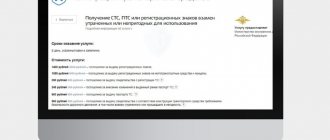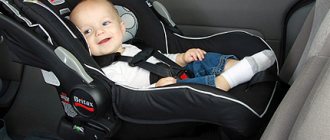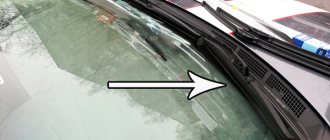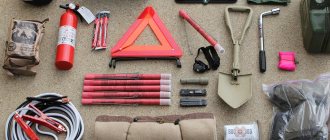Purchased vehicles are personal property, however, changes made to the design of the vehicle and a number of operating mechanisms must be registered. The reason is inconsistencies with the data in the vehicle passport. In case of theft, verification of numbers, technical expertise and in other situations, the owner will not be able to prove the right to own the equipment. Moreover, the inspection may result in fines being imposed. The procedure for registering changes, which is carried out by the traffic police, helps to avoid such problems. Our company offers assistance in re-registration of a car in Moscow, and also provides a number of other services on favorable terms. We will collect documents as soon as possible and carry out the necessary activities, even without your personal presence.
What is tuning by law
The state considers tuning any deviation from the factory configuration of the car. The requirements of the Customs Union say which changes can be made to the design of the machine and which cannot. Here are some options:
- installation of bumpers, thresholds, spoilers without a certificate from the car manufacturer;
- exhaust system refurbishment;
- increasing or decreasing ground clearance;
- installation of additional lighting devices;
- installation of special equipment, for example, a tow bar;
- installation and dismantling of gas cylinders;
- replacement of external lighting devices, including installation of xenon or diode lamps;
- re-equipment of a car for disabled people.
The requirements of the Customs Union are necessary so that a tuned car does not create a danger on the road. If the owner attaches a new part to a car in the garage and does not pass the test in a technical laboratory, an accident may occur and people will suffer.
In June 2021, the Customs Union clarified the requirements to clarify the situation for traffic police inspectors and drivers. There are regulations for coordinating improvements with the traffic police. Fines for tuning have become justified and inspectors have no right to arbitrarily fine drivers.
The owner of the car registers such garage modifications as changes to the design of the car.
New term - testing laboratory
Government Decree No. 413 introduces a new definition in 2021. This is the certification authority for the changes made.
It is a laboratory that has passed the appropriate state accreditation and, thus, has grounds to carry out verification of changes and examination.
This term will be used frequently below.
You will also be interested in:
- How to register an LPG with the traffic police? Registration instructions, rules and documents
- How to make changes to the design of a car officially?
- Is it possible to register a car with the MFC today and how? Instructions
What kind of tuning will cause your car's registration to be revoked?
The car will be deregistered if the driver does not eliminate the changes in the design or does not register them. This applies to appearance, power and the type of fuel the car runs on. This is stated in clause 6, part 1, art. 18 of the Law on Vehicle Registration.
For example, according to the title the car is a blue Lada Vesta with a 1.6 liter engine, but in fact it is a red Vesta pickup with a five liter engine from BMW. Or the owner installs a huge speaker and a gas cylinder, which block the view of the rear window.
They will not remove the license plates on site, but they will deregister the car. Here's how it works in practice:
Alexander Torvard, auto lawyer at Dorogahelp
If an inspector stops a car and explains the reason for the stop by saying that the car has non-standard structures such as a winch or a lowered suspension, he will most likely issue a fine. In addition, he will write an order to eliminate or register new mechanisms. Information about the order will be included in the traffic police database. If the driver does not change anything within 10 days, the registration will be canceled and they will be required to hand over the STS and license plates.
Types of car tuning
First of all, let’s highlight the common types of tuning that have become widespread in Russia:
- Tinting.
- Gas equipment.
- Xenon or LED headlight bulbs.
All these changes are widespread, so each of them is discussed in a separate article. Today we will not dwell on them in detail.
As for other types of tuning, they can be divided into the following groups:
- Improving the appearance of the car. This group includes, for example, the installation of non-standard bumpers and spoilers on cars.
- Improving the technical characteristics of the machine. In this case, we are talking about making changes to the car engine, its suspension or other structural elements.
- Improving vehicle cross-country ability. Preparing a car for off-road travel includes installing additional equipment, such as a winch or snorkel, as well as modifying the design of the car itself.
In general, changes to the design affect a fairly large group of car owners.
How to register changes to a car's design
Select a laboratory. You cannot register changes to your car at any car service center; by law, they are checked by a certified technical laboratory or testing center. There are these in every region. How to choose a laboratory, read below.
Agree on the planned changes. Send an email to the accredited center about what changes you want to make. Get a positive conclusion. Submit this document along with your application to the traffic police technical supervision department.
Refurbish a car. The owner of the car has the right to make changes independently or at a car repair shop.
Pass a technical inspection and receive a diagnostic card. This can be done at any point where they do a technical inspection and issue a state-issued certificate for the traffic police.
Be tested at an accredited center and receive a protocol. Laboratory workers will compare what the owner planned to do with what was done.
Take the documents to the traffic police. You will need documents: PTS, STS, protocol, copies of certificates of conformity for used spare parts certified by a notary and a receipt for payment of the state duty - 800 rubles.
Submit the car for examination to traffic police officers. Technical supervision employees will check the documents with the car that the owner brought. If everything matches, a vehicle design safety certificate (SVTS) will be issued.
Take all documents to the registration department of the traffic police. This is the final stage - the owner will be given a new PTS and STS.
New procedure for making changes
The general procedure for registering changes made with the traffic police is quite short, but quite time-consuming. It includes the following steps:
- passing a preliminary examination,
- obtaining permission from the traffic police for improvement (even before the start of actual work in the car service),
- actual changes to the design,
- verification of the improvements made in an accredited laboratory,
- passing a technical inspection,
- checking with the traffic police that the changes comply with the declared ones by inspecting the car,
- obtaining a certificate of conformity.
Now let's take a closer look at each point!
Preliminary examination
This is the most important stage! Here you need to choose an organization accredited for 2021, which will check the very possibility of making changes. It is important that the organization undergoes accreditation.
You can find a list of such laboratories on the website of the Eurasian Commission of the Customs Union.
After you choose the one that suits your geography, simply go there with your passport and documents for the car to undergo a preliminary examination. Keep in mind that the service is paid.
Obtaining permission from the traffic police - documents
Their list is as follows:
- application for a permit,
- passport; if the application is not submitted by the owner of the car, then a notarized power of attorney from the owner plus a passport of the authorized person,
- conclusion of a preliminary examination on the possibility of making changes.
in DOCX (or PDF) format.
After submitting all the documents, the State Traffic Inspectorate will allow you to do tuning or will deny this opportunity.
When can changes not be registered?
These are common typical cases when the improvements made may negatively affect traffic safety, or there is no confirmation in the form of insufficient documents about the possibility of making changes:
- Not all documents from the list above are presented to the traffic police,
- documents from the list above have signs of forgery, are wanted, the power of attorney is incorrectly drawn up (wrong person, missing signatures),
- the examination was carried out by an unaccredited laboratory,
- if the issued preliminary examination report contains requirements that violate road safety,
- the examination conclusion is not included in a special register - valid from January 1, 2021,
- if, as a result of changes to the design (based on the results of the same examination), the following occurs: the VIN number of the car is destroyed,
- the permissible maximum weight of the vehicle will increase,
- replacement of the body with a body not from this car brand,
- installation of a crane on a machine that has not been tested as part of this machine,
Making an improvement
The procedure for making changes is not regulated by Resolution No. 413 of April 6, 2021.
But in the case of gas equipment, in the future we will need a document such as “a declaration from the manufacturer of the installation of equipment for supplying the engine with gaseous fuel to the vehicle.” Its form is approved in Appendix No. 2 to Government Resolution 413.
In other cases, it is advisable to choose a car service that issues standard documents (certificate of completion, checks or receipts) about the work performed.
Laboratory testing after changes
Now we again need to contact an accredited laboratory - preferably the same one that you contacted for the preliminary examination.
The organization will check the changes made and issue an appropriate verification report. You will definitely need it later.
Technical inspection
Here in 2021, everything is done the same as during a regular scheduled technical inspection.
Traffic police check
Now we again contact the traffic police for inspection with the car with the changes made and the following documents:
- application for issuance of a certificate of conformity,
- passport; if the application is not submitted by the owner of the car, then a notarized power of attorney from the owner plus a passport of the authorized person,
- declaration of work, if we are talking about the installation of gas equipment,
- vehicle safety laboratory inspection report,
- documents confirming payment of the state fee for obtaining a certificate of conformity,
- traffic police permit (from the first stage).
Grounds for refusal after verification
- documents from the list above are fake, are on the wanted list, the power of attorney is incorrectly drawn up (wrong person, missing signatures),
- the inspection protocol was drawn up by an organization without accreditation,
- the inspection protocol is not included in the register (valid only from January 1, 2021),
- the car did not pass technical inspection after making changes,
- the car, its license plates or documents are on the wanted list of the traffic police,
- there are prohibitions on registration actions from bailiffs,
- if you did not provide the car itself for inspection by the traffic police,
- there are signs of forgery, destruction or concealment of the VIN number,
- if changes are made to the design that do not correspond to those presented in the declaration (in the case of gas cylinder equipment), the permit issued by the State Traffic Safety Inspectorate or the preliminary examination report, as well as if changes prohibited by regulations are made (for example, a “kenguryatnik” is installed).
Certificate of Compliance
Based on the results of the check in point 6, you will be issued a certificate of compliance or refused to issue it.
This is what it looks like:
All that remains is to re-register with the traffic police within 10 days and receive a registration certificate.
Something else useful for you:
- Is it possible to replace a car body at the traffic police legally and how?
- Removing a car from the traffic police register due to the death of the owner in questions and answers
- Do I need to register the tow bar officially with the traffic police and how?
How to check the center's accreditation
Why check? If an unscrupulous center comes across, it will take the money and issue a fake document. Not all centers have the right to issue documents for the conversion of any machine. One laboratory tests only buses and issues a report on changes in the design of the buses. Another has accreditation only for checking gas equipment on passenger cars, which means that she will draw up a protocol only about this. If the traffic police do not check the accreditation, the fake may be discovered on the road.
Where to view accreditation. Open the website of the Federal Accreditation Service and fill in the filters on the right. Select:
- Status: Active
- Type of accredited entity: Testing laboratories,
- Technical regulations of the EAEU: TR CU 018/2011.
The Federal Accreditation website sometimes works with a delay, the buttons do not respond immediately
Click “Find” - a list of centers and laboratories will appear on the right. At the time of publication of this article, there are 57 of them. See the last column “Description of the scope of accreditation.” It indicates what types of vehicles the laboratory is authorized to examine.
If the laboratory you were planning to contact is not on this list, it is better to choose another one. Otherwise, the traffic police inspector may consider changes in the design of the car illegal and prohibit you from driving it.
- Tuning - any differences from the factory equipment of the car.
- The fine for illegal tuning is up to 500 rubles. For repeated violation - up to 5,000 rubles.
- In addition to the fine, the inspector will cancel the registration of the car - you will no longer be able to drive it.
- To register changes, you will have to find an accredited laboratory in the city and go to the traffic police several times.
- After all the procedures, you will receive a PTS and STS with new data.
All articles by the author: Evgeniy Lesnov
Fine for car tuning in 2021
Fines for changing the design of a vehicle are provided for in Article 12.5 of the Administrative Code:
1. Driving a vehicle in the presence of malfunctions or conditions under which, in accordance with the Basic Provisions for the admission of vehicles to operation and the duties of officials to ensure road safety, operation of the vehicle is prohibited, with the exception of malfunctions and conditions specified in parts 2 - 7 of this article , —
entails a warning or the imposition of an administrative fine in the amount of five hundred rubles.
So, the driver will receive a fine of 500 rubles for most changes made to the design.
There are a few exceptions that carry more severe penalties:
- Installing headlights with red lights on the front of the car - deprivation of rights from 4 to 6 months (Part 3 of Article 12.5);
- Installation of special light (flashing lights) or sound signals - deprivation of rights from 12 to 18 months (part 4 of article 12.5);
- Installation of a sign “Disabled” - a fine of 5,000 rubles (part 41 of article 12.5);
- Installation of color schemes for operational services - deprivation of rights from 12 to 18 months (Part 6 of Article 12.5);
- Installing a color scheme for a passenger taxi - a fine of 5,000 rubles.
All of the above design changes are illegal and this does not raise questions among drivers. Within the framework of this article, we are interested in those changes that do not fall into the specified list. You need to understand in which case a fine of 500 rubles can be imposed and in which it cannot.
And to do this, you need to understand what types of tuning relate to design changes.
Note. If a change in the design of the vehicle is detected, the traffic police may cancel the registration of the vehicle:
Cancellation of registration for design changes
Official text of Government Decree No. 413
.
In accordance with Section 4 of Chapter V of the technical regulations of the Customs Union “On the safety of wheeled vehicles,” the Government of the Russian Federation decides:
- Approve the attached Rules for making changes to the design of wheeled vehicles in use and for subsequent verification of compliance with the requirements of the technical regulations of the Customs Union “On the safety of wheeled vehicles”.
- The Ministry of Internal Affairs of the Russian Federation, before June 1, 2019, shall approve the administrative regulations for the provision of state services for issuing permission to make changes to the design of a wheeled vehicle in operation and the administrative regulations for the provision of state services for issuing a certificate of conformity of a vehicle with changes made to its design safety requirements.
- This resolution comes into force on June 1, 2021, with the exception of subparagraph “d” of paragraph 7 and subparagraph “d” of paragraph 10 of the Rules approved by this resolution, which come into force on January 1, 2021.
Rules for making design changes and subsequent inspections
1. These Rules establish the procedure for making changes to the design of wheeled vehicles in operation and for subsequent verification of compliance with the requirements of the technical regulations of the Customs Union “On the safety of wheeled vehicles” (hereinafter referred to as the technical regulations).
2. In these Rules:
- a) wheeled vehicles in operation mean vehicles registered with the State Road Safety Inspectorate of the Ministry of Internal Affairs of the Russian Federation (hereinafter referred to as the State Traffic Inspectorate, vehicles);
- b) a testing laboratory (center) is understood as an organization accredited to carry out work to assess compliance with the requirements of the technical regulations of the relevant categories of vehicles with changes made to their design, carrying out work to assess the conformity of products with the requirements of the technical regulations after their release into circulation in the form of a technical assessment condition (technical examination) or examination and included in the unified register of conformity assessment bodies of the Eurasian Economic Union in accordance with the Procedure for including accredited conformity assessment bodies (including certification bodies, testing laboratories (centers) in the unified register of conformity assessment bodies of the Eurasian Economic Union economic union, as well as its formation and maintenance, approved by decision of the Council of the Eurasian Economic Commission dated December 5, 2021 No. 100.
3. In the cases provided for in paragraph 77 of the technical regulations, the implementation of the procedures (actions) provided for by these Rules is not required.
4. Changes to the design of a vehicle are carried out after receiving from the State Traffic Inspectorate unit, which is entrusted with the responsibility for providing the relevant public service, permission to make changes to the design of the vehicle (hereinafter referred to as the permit), followed by verification by the State Traffic Inspectorate unit of compliance with the requirements of the technical regulations (hereinafter referred to as the permit). verification) and issuance of a certificate of compliance of the vehicle with changes made to its design with safety requirements (hereinafter referred to as the certificate).
5. To obtain permission, the owner of the vehicle or his authorized representative submits the following documents to the State Traffic Inspectorate unit:
- a) application for a permit;
- b) passport of a citizen of the Russian Federation or other identification document;
- c) power of attorney, agreement or other document certifying the authority of the authorized person to represent the interests of the owner of the vehicle (for the authorized person);
- d) conclusion of a preliminary technical examination of the vehicle design for the possibility of making changes to it, meeting the requirements for its content in accordance with Appendix No. 1 (hereinafter referred to as the conclusion), issued by the testing laboratory (center).
6. The State Traffic Inspectorate unit checks the documents submitted in accordance with paragraph 5 of these Rules, and based on its results, issues a permit or refuses to issue it, indicating the reasons for the refusal.
7. The decision to refuse to issue a permit is made in the following cases:
- a) the documents provided for in paragraph 5 of these Rules are not presented in full;
- b) the documents provided for in paragraph 5 of these Rules do not comply with the requirements of the legislation of the Russian Federation, contain false information, have signs of forgery, and are also among the lost (stolen);
- c) the conclusion was issued by a testing laboratory (center) that does not meet the requirements specified in paragraph 2 of these Rules;
- d) the conclusion contains information that contradicts the safety requirements for vehicles established by the technical regulations;
- e) the conclusion is not in the register of conclusions of preliminary technical examination of the design of a vehicle for the possibility of making changes, protocols for checking the safety of the design of a vehicle after changes have been made to it, the procedure for the formation and maintenance of which is established by the Ministry of Economic Development of the Russian Federation (hereinafter referred to as the register);
- f) the conclusion contains information about planned changes in the design of the vehicle, which will entail its conformity assessment in accordance with the requirements of Section 2 of Chapter V of the technical regulations and the following changes: destruction of the identification number;
- an increase in the permitted maximum weight and (or) a change in the base if there is no type approval for a vehicle with similar characteristics;
- replacement of the body (parts of the body) of a car or bus, cabin (parts of the cabin) of a truck and (or) chassis of a vehicle with a body (parts of the body), cabin (parts of the cabin) and (or) chassis that are not provided for by the brand of the vehicle;
- installation of lifting equipment for independent loading and unloading of goods, for which a conformity assessment has not been carried out as part of the vehicle;
8. To carry out the inspection and obtain a certificate, the owner of the vehicle or his authorized representative submits to the department of the State Traffic Inspectorate that issued the permit, the vehicle with changes made to its design and the following documents:
- a) application for a certificate;
- b) passport of a citizen of the Russian Federation or other identification document;
- c) power of attorney, agreement or other document certifying the authority of the authorized person to represent the interests of the owner of the vehicle (for the authorized person);
- d) declaration of the manufacturer of the installation of equipment for powering the engine with gaseous fuel on the vehicle (in the case of installation of equipment for powering the engine with gaseous fuel on the vehicle), meeting the requirements for its content in accordance with Appendix No. 2 (hereinafter referred to as the declaration);
- e) a protocol for checking the safety of the vehicle design after changes made to it, meeting the requirements for its content in accordance with Appendix No. 3 (hereinafter referred to as the verification protocol), drawn up by the testing laboratory (center);
- f) a copy of documents confirming payment of the state fee for issuing a certificate;
- g) permission.
9. The State Traffic Inspectorate unit inspects the vehicle with changes made to its design, checks the documents submitted in accordance with paragraph 8 of these Rules, and based on the results of these actions, issues a certificate or refuses to issue it, indicating the reasons for the refusal.
10. The decision to refuse to issue a certificate is made in the following cases:
- a) the documents provided for in paragraph 8 of these Rules are not provided in full;
- b) the documents provided for in paragraph 8 of these Rules do not comply with the requirements of the legislation of the Russian Federation, contain unreliable information, have signs of forgery, and are also among the lost (stolen);
- c) the inspection report was drawn up by a testing laboratory (center) that does not meet the requirements specified in paragraph 2 of these Rules;
- d) the inspection protocol is not in the register;
- e) there is no information about the results of the technical inspection of the presented vehicle with changes made to its design;
- f) the vehicle, its components, registration documents and (or) state registration plates are wanted;
- g) in relation to the vehicle, in accordance with the legislation of the Russian Federation, prohibitions or restrictions on the performance of registration actions have been established;
- h) the vehicle is not presented for inspection;
- i) signs of concealment, falsification, alteration, or destruction of the identification marking applied to the vehicle by the manufacturer were discovered;
- j) the changes made to the design of the vehicle do not comply with the changes specified in the permit, and (or) the inspection protocol, and (or) the declaration, and (or) do not comply with the requirements of the technical regulations.
11. The certificate is issued in the form established by Appendix No. 18 to the technical regulations, and is filled out in accordance with the Rules for filling out forms for vehicle type approval, chassis type approval, notice of cancellation of a document certifying compliance with technical regulations, vehicle design safety certificate and certificate on the compliance of the vehicle with changes made to its design with the safety requirements approved by the decision of the Board of the Eurasian Economic Commission dated December 9, 2014 No. 232.
12. The certificate is considered invalid and subject to cancellation if it is issued in violation of these Rules.
13. Within 10 days after receiving the certificate, the owner of the vehicle must contact the division of the State Traffic Inspectorate, which provides the state service for registering motor vehicles and their trailers, to make changes to the registration data of the vehicle.
14. The provisions of the Federal Law “On the organization of the provision of state and municipal services” apply to relations for obtaining permission and issuing a certificate.
Appendix No. 1 Requirements for the content of the conclusion of a preliminary technical examination of the design of a vehicle for the possibility of making changes
1. The conclusion of a preliminary technical examination of the design of a vehicle for the possibility of making changes must contain the following information:
- a) the name of the testing laboratory (center), its legal and actual addresses, reference telephone numbers, email address, registration number of the accreditation certificate, number in the unified register of conformity assessment bodies of the Eurasian Economic Union;
- b) date of registration and number;
- c) make, model, state registration plate, category in accordance with Appendix No. 1 to the technical regulations of the Customs Union “On the safety of wheeled vehicles” (hereinafter referred to as the technical regulations), type of vehicle, identification number or number of the chassis (frame) and body, environmental class, model, engine type and power, permissible maximum weight, unloaded weight, number of seats for passengers (for buses);
- d) proposed changes in the design of the vehicle;
- e) assessing the possibility of such changes;
- f) a description of the work required to make the proposed changes and the requirements for the vehicle components used;
- g) a conclusion that the vehicle remains in compliance after making changes to its design with the requirements of the technical regulations in force on the date of its release into circulation;
- h) a list of requirements (tests) and (or) measurements of parameters that must be carried out (confirmed) after making changes to the design of the vehicle to ensure that its safety meets the requirements of technical regulations, or information about the absence of such a need.
2. The conclusion of a preliminary technical examination of the vehicle design for the possibility of making changes is signed by the expert, as well as the head of the testing laboratory (center).
Signatures are deciphered by indicating the surname and initials of the signatory and are sealed with the seal of the organization (if there is a seal).
Appendix No. 2: Requirements for the content of the manufacturer’s declaration of installation of equipment for powering the engine with gaseous fuel on a vehicle
1. The declaration of the manufacturer of the installation of equipment for powering the engine with gaseous fuel on a vehicle (hereinafter referred to as the declaration) must contain the following information:
- a) the name of the work manufacturer, his legal and actual addresses, reference telephone numbers, email address, number and validity period of the certificate of conformity for the services provided (if any);
- b) make, model (type), state registration plate, identification number or chassis (frame) and body number of the vehicle, the design of which has been changed;
- c) information provided for in paragraph 8.4 of Appendix No. 9 to the technical regulations of the Customs Union “On the safety of wheeled vehicles” in relation to the declaration.
The declaration is signed by the head of the work manufacturer.
The signature is deciphered by indicating the surname and initials of the signatory and sealed with the seal of the organization (if any).
Appendix No. 3: Requirements for the content of the protocol for checking the safety of a vehicle design after changes have been made to it
1. The protocol for checking the safety of a vehicle design after changes made to it must contain the following information:
- a) the name of the testing laboratory (center), its legal and actual addresses, reference telephone numbers, email address, registration number of the accreditation certificate, number in the unified register of conformity assessment bodies of the Eurasian Economic Union;
- b) date of registration and number of the inspection protocol;
- c) make, model, state registration plate, category in accordance with Appendix No. 1 to the technical regulations of the Customs Union “On the safety of wheeled vehicles” (hereinafter referred to as the technical regulations), type of vehicle, identification number or number of the chassis (frame) and body, environmental class, engine model, as well as changed general technical characteristics of the vehicle after changes have been made to its design, provided for by the certificate of compliance of the vehicle with the changes made to its design with safety requirements, the form of which is established by Appendix No. 18 to the technical regulations;
- d) confirmation of mandatory certification or declaration of conformity of structural components, items of additional equipment, spare parts and accessories of vehicles used during the work in the manner established by the technical regulations;
- e) confirmation of compliance with the requirements of Appendix No. 9 to the technical regulations in relation to individual changes made to the design of the vehicle, and in the case of installation of equipment for powering the engine with gaseous fuel - the availability of documents drawn up in the prescribed manner, provided for by the requirements of paragraph 9.8 of Appendix No. 8 to the technical regulations ;
- f) a list of requirements (tests) and (or) measurements of parameters that are confirmed (carried out) in accordance with the conclusion of a preliminary technical examination of the vehicle design for the possibility of making changes and which certify that the safety of the vehicle complies with the requirements of the technical regulations, indicating : results of tests and (or) measurements performed;
- limits of permitted values in accordance with the requirements of technical regulations;
- assessments for each change (complies or does not comply with the requirements of technical regulations);
2. The protocol for checking the safety of the vehicle design after changes made to it is signed by the expert, as well as the head of the testing laboratory (center).
Signatures are deciphered by indicating the surname and initials of the signatory and are sealed with the seal of the organization (if there is a seal).
What is the 2021 vehicle design change?
Changing the design of a vehicle is any installation or replacement of spare parts and components, components and aggregators of a vehicle with others that were not originally provided for your vehicle in the manufacturer’s operational documentation. All these changes must be checked for compliance with safety requirements and a re-equipment note must be included in the documents.
What the manufacturer specifies for each vehicle in the technical documentation, namely, additional components that the manufacturer specified in the vehicle manual or in the vehicle type approval (VTA) is not considered a change in the design of the vehicle.
Any replacement of spare parts (except for the internal combustion engine, since this is a numbered spare part), components and assemblies with those specified in the manufacturer’s operating documentation does not constitute changes to the design. There is no need to register such modifications with the traffic police.
Let's look at a specific example
Let’s say that the technical documentation for the Chevrolet Niva states that it is possible to install towing devices on the car. The manufacturer recommends purchasing original parts. If the part's passport indicates that it is intended for the Niva, it can be installed without additional approvals.
If the owner puts a towbar on the car that is not intended for it, this is already considered a change in the design. For example, on the Niva from our example, it is impossible to install a trailer hitch without additional permits, the documentation of which does not confirm that this particular towbar has passed the compliance test for use on this particular vehicle model. Before installation, the part must be tested and receive a safety certificate.










